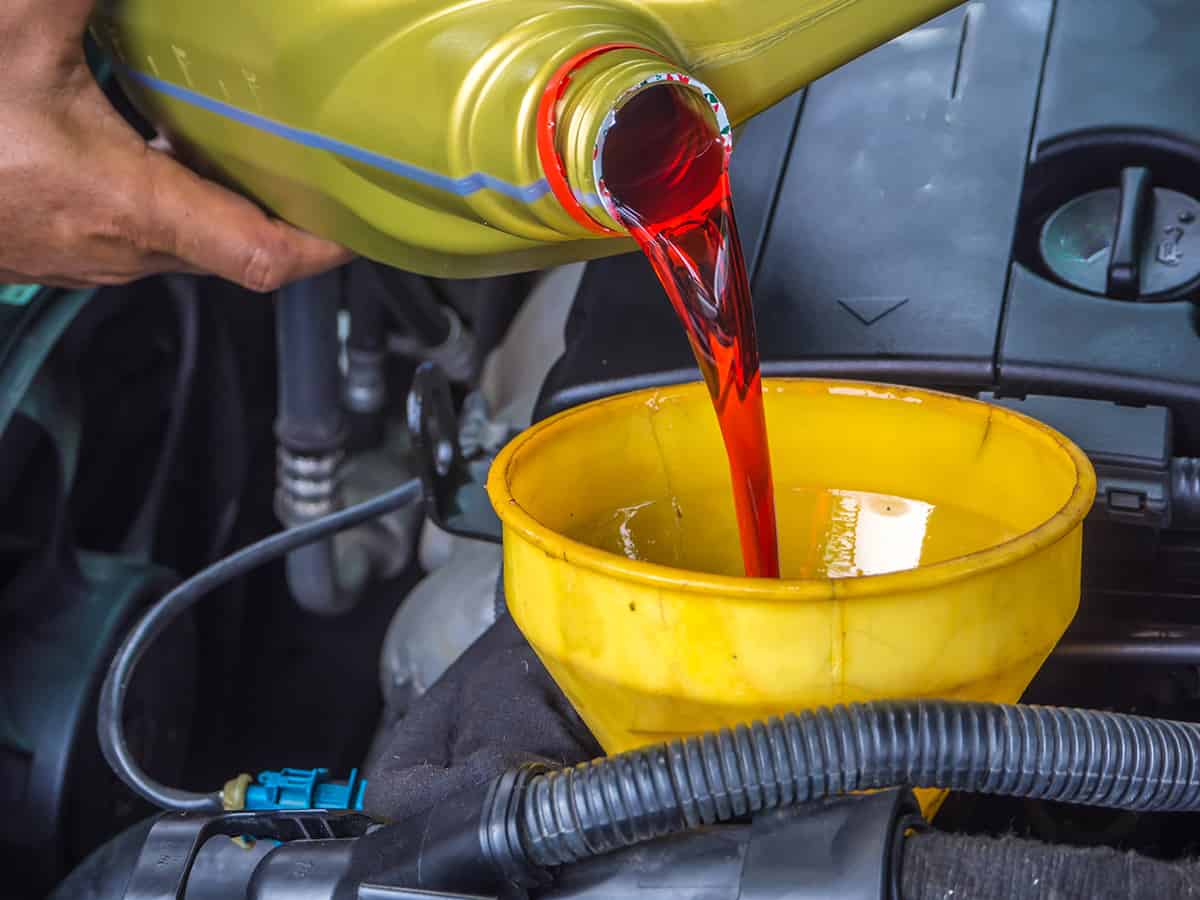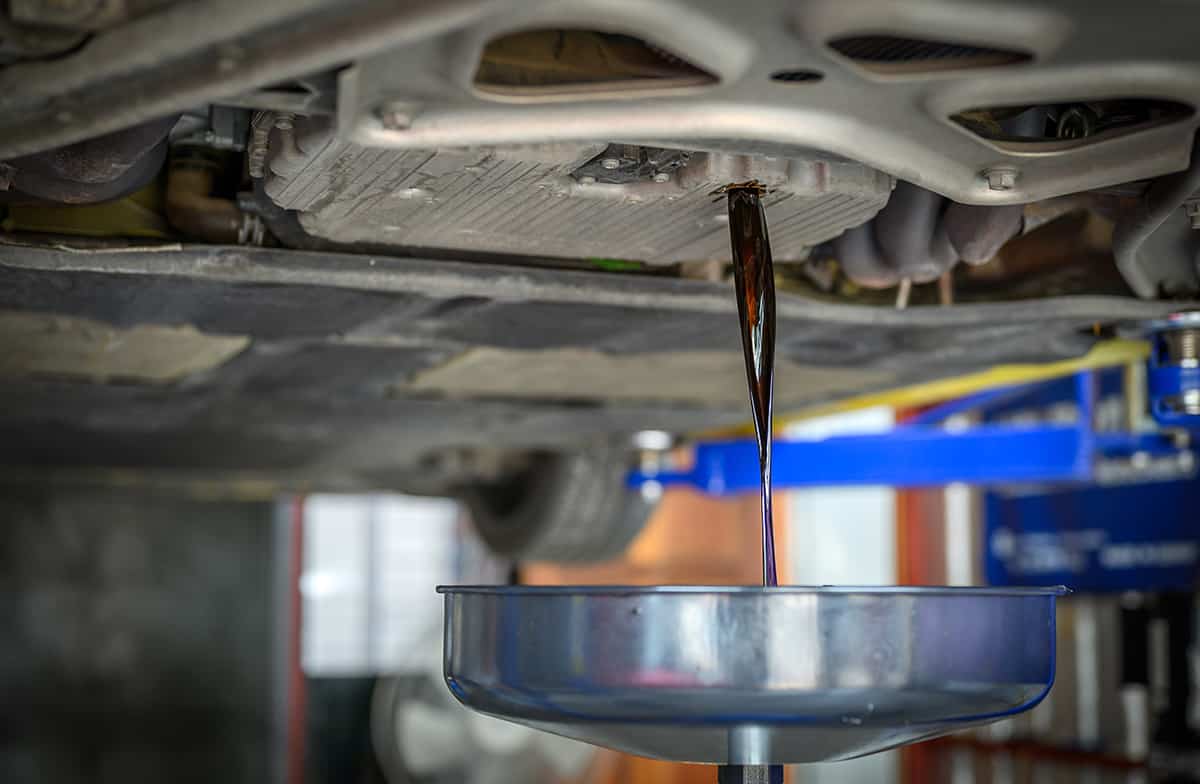Automotive maintenance goes beyond regular oil changes and tire rotations. Among the components that necessitate due diligence is the transmission system, an integral part of a vehicle’s performance. Without proper care, the transmission fluid can lead to serious issues and costly repairs. One such care routine is a transmission fluid flush.
A transmission fluid flush is a comprehensive process that cleanses the transmission system by replacing old fluid with new. It’s more thorough than a transmission fluid change, which usually leaves some old fluid in the system. The cost varies, typically ranging from $100 to $300, depending on several factors.
This article will introduce the concept of a transmission fluid flush. From understanding what it is, its importance, and how it compares to a transmission fluid change to figuring out the costs involved and when it’s necessary, we’ll cover everything you need to know.
A Quick Intro to Transmission Fluid

Transmission fluid is a specially formulated liquid designed to lubricate, cool, clean, and protect the components of a vehicle’s transmission. It enables smooth gear shifts, prolongs the life of the transmission, and can significantly improve your vehicle’s performance.
The transmission fluid plays a pivotal role in your vehicle. It helps in reducing heat generated within the transmission system and protecting it from wear and tear. By ensuring smooth gear shifts, it boosts the vehicle’s overall performance.
What Is Transmission Flush?

A transmission fluid flush, also known as a transmission flush, is a comprehensive maintenance procedure designed to clean your vehicle’s transmission system. It involves replacing the old transmission fluid with fresh fluid, eliminating contaminants that can compromise the performance of your car’s transmission.
Transmission Flush Process
The transmission flush process begins with your vehicle connected to a professional-grade machine designed specifically for this purpose. This machine circulates the new transmission fluid through your vehicle’s transmission and cooling systems under pressure. The goal is to purge all the old fluid and any built-up debris or contaminants.
Benefits of a Transmission Fluid Flush
There are several benefits to regularly flushing your transmission fluid.
- Improved Vehicle Performance: Fresh transmission fluid ensures smoother gear shifting, leading to enhanced driving comfort and vehicle performance.
- Extended Lifespan of Transmission: By removing contaminants that can cause wear and damage, a transmission fluid flush can extend the life of your transmission system, potentially saving you from costly future repairs.
- Better Fuel Economy: A clean, efficiently operating transmission can improve your vehicle’s fuel economy.
- Prevention of Overheating: Transmission fluid plays a crucial role in cooling the transmission system. By ensuring the fluid is clean and fresh, a transmission fluid flush can help prevent overheating, one of the leading causes of transmission failure.
Transmission Fluid Flush vs. Transmission Fluid Change
In the world of vehicle maintenance, two terms often create confusion: transmission fluid flush and transmission fluid change. While both processes aim to enhance your vehicle’s transmission system’s longevity and performance, they are significantly different in their approach.
Demystifying Transmission Fluid Change
A transmission fluid change is a simpler procedure, often compared to an oil change. This process involves draining the old transmission fluid from the transmission pan and replacing it with fresh fluid.
However, a transmission fluid change doesn’t clean the system as thoroughly as a fluid flush. It typically removes and replaces only about half of the total fluid volume. This is because some of the old fluid remains in parts of the transmission system that aren’t easily accessible, such as the torque converter and cooler lines.
Comparing the Two: Which is Better?
The question of whether a transmission fluid flush or a fluid change is better depends on your vehicle’s specific situation.
A transmission fluid change is less invasive and can be sufficient for vehicles that are regularly serviced and don’t have any transmission issues. This process is less expensive and can be a proactive step in maintaining your transmission system.
Conversely, a transmission fluid flush can be a better choice if your vehicle has a significant amount of mileage, has not had regular transmission maintenance, or is showing signs of transmission problems. It’s more thorough and can remove more contaminants that could potentially cause damage.
When to Consider a Transmission Fluid Flush

Your vehicle often signals when it’s time for a transmission fluid flush. Noticing these signs can help you prevent more significant, costlier issues down the line. Some signs that suggest a need for a transmission fluid flush include:
Trouble Shifting Gears: Difficulty in shifting gears can be a sign that your transmission fluid has degraded or the presence of contaminants is interfering with the transmission’s ability to maintain hydraulic pressure.
- Slipping Gears: If your vehicle spontaneously pops out of the gear you’re driving in, it’s known as slipping gears, which can be a sign of worn-out transmission fluid.
- Vehicle Surging: Your vehicle engine may ramp up or slow down for no apparent reason. This is often due to inadequate or dirty transmission fluid.
- Delayed Vehicle Movement: If your vehicle delays movement after being put in drive, it may be an indication that the transmission fluid is not sending adequate pressure to the gears.
- Transmission Noises: If you hear grinding or other strange noises when you’re driving, it could indicate an issue with the transmission fluid or the transmission itself.
Mileage and Time Considerations
A common rule of thumb suggests that a transmission fluid flush should be considered every 30,000 to 60,000 miles. However, this frequency can change based on your vehicle’s make, model, and the type of transmission fluid it uses.
For instance, newer vehicles with synthetic transmission fluid might only require a flush every 100,000 miles. Conversely, if your vehicle is older, has high mileage, or is used under more demanding conditions (like towing heavy loads), more frequent flushes might be beneficial. Always refer to your vehicle’s owner manual for manufacturer-specific recommendations.
The Cost of Transmission Fluid Flush
Several factors influence the cost, including your vehicle’s make and model, type of fluid, and the service provider’s rates.
- Vehicle Specifications: Different vehicles require different types of transmission fluid, and some may need more fluid than others. These factors affect the cost. For instance, high-performance or luxury vehicles may require specialized, more expensive fluids, leading to higher overall costs.
- Type of Fluid: The cost of transmission fluid varies. Traditional transmission fluid tends to be cheaper, while synthetic or specialty fluids are more expensive. The type of fluid your vehicle requires will significantly impact the total cost.
- Labor Costs: Labor costs can vary based on your location and the auto service center you choose. Dealerships or specialized transmission repair centers may charge more for their expertise, while general auto repair shops might offer a lower rate.
- Additional Services: A transmission fluid flush might be part of a larger transmission service package, including additional services like changing the transmission filter or pan gasket. These additional services would increase the overall cost.
Estimating the Cost of a Transmission Fluid Flush
Despite the variations, you can expect to pay, on average, anywhere from $100 to $300 for a professional transmission fluid flush. The broad range accounts for all the variables mentioned above. Remember that lower cost doesn’t necessarily mean better value. The quality of service, including the use of high-quality fluids and professional, experienced labor, is vital in ensuring the effectiveness of a transmission fluid flush.
DIY vs. Professional Transmission Fluid Flush
For mechanically inclined vehicle owners, performing a DIY transmission fluid flush might seem like a cost-saving option. While it’s true that you could save on labor costs, consider the following factors:
- Equipment Costs: A thorough transmission fluid flush requires specific equipment to push fluid through all parts of the system. This equipment is costly and may not be a practical purchase for a procedure performed infrequently.
- Time and Effort: A transmission fluid flush can be a messy and time-consuming process, especially without the conveniences of a professional garage.
- Potential for Error: Without professional automotive experience, there’s a risk of error. Mistakes could potentially damage your vehicle and lead to more costly repairs.






